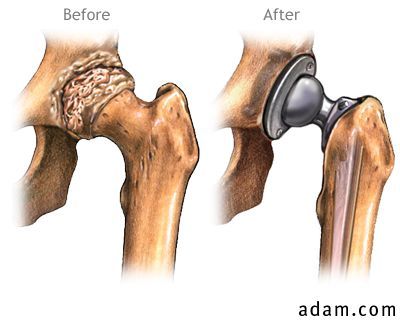|
|
|
Aftercare
|

|
|
|
|

|
You will experience moderate to severe pain after surgery. However, you may receive patient-controlled analgesia (PCA), intravenous (IV), or epidural analgesics to control your pain for the first 3 days after surgery. The pain should gradually decrease, and by the third day after surgery, oral analgesic medications may be sufficient to control your pain. Try to schedule your pain medications about one half hour before ambulation or position changes.
You will also return from surgery with several IV lines in place to provide hydration and nutrition. The IV will remain in place until you are taking adequate amounts of oral fluids. If the procedure is elective, you may be encourage to donate blood several weeks prior to surgery to use to replace any blood lost during the procedure. Sometimes, the blood that is drained from the wound during surgery is collected in a special sterile container to be re-infused through an IV after surgery (autotranfusion).
You will also return from surgery wearing anti-embolism stockings or inflatable pneumatic compression stockings. These devices are used to reduce your risk of developing blood clots, which are more common after lower extremity surgery. Additionally, you will be encouraged to start moving and walking early after surgery. You will be encouraged to get out of bed to a chair on the first day after surgery. When in bed perform ankle exercises frequently to prevent development of blood clots.
You may be instructed on how to use an incentive spirometry device (a plastic device that indicates how much air is breathed in at one time) to gradually increase the depth of your respirations, as well as performing deep breathing and cough procedures in order to prevent pneumonia.
A Foley catheter may be inserted during surgery to monitor the function of your kidneys and hydration level. This will be removed on the second or third day after surgery. You will be encouraged to try to walk to the bathroom with assistance. If you are unable to walk this far, a special smaller bedpan will be used to keep the hip in proper alignment.
Results with a hip prosthesis have been excellent. The operation relieves pain and stiffness symptoms, and most patients (over 80%) need no help walking. With time, loosening of the artificial joint has been observed due to the limited properties of the cement used to attach the artificial parts to the bones.
You will remain in the hospital for 5 to 8 days after surgery. However, some people may need further rehabilitation and assistance after hip replacement surgery. Temporary placement in a rehabilitation unit or long-tern care center may be necessary until mobility has improved and the person can safely live independently. These centers will provide intensive physical therapy to assist in regaining muscle strength and flexibility in the joint.
Positioning is very important after surgery to reduce stress on the new joint and displacement of the joint. The new hip will not have the same range of movement of the original joint, although you should eventually be able to return to your previous level of activity. However, you should avoid vigorous sports such as tennis, skiing, or contact sports.
The use of crutches or a walker is necessary for 3 months or more until healing is complete.
SPECIAL PRECAUTIONS:
The new joint has a limited range of movement. You will need to take special precautions to avoid displacement of the joint, including:
- Avoid crossing your legs or ankles even when sitting, standing, or lying.
- When sitting, keep you feet about 6 inches apart.
- When sitting, keep your knees below the level of your hips. Avoid chairs that are too low. You may sit on a pillow to keep your hips higher that your knees.
- When getting up from a chair, slide toward the edge of the chair and then use your walker or crutches for support.
- Avoid bending over at the waist. You may consider purchasing a long-handled shoehorn or a sock aid to help you put on and take off your shoes and socks without bending over. Also, an extension reacher or grabber may be helpful for picking up objects that are too low for you to reach.
- When lying in bed, place a pillow between your legs to keep the joint in proper alignment. * A special abductor pillow or splint may be used to keep the hip in correct alignment. * An elevated toilet seat may be necessary to keep the knees lower than the hips when sitting on the toilet.
|
|

|
The information provided herein should not be used for diagnosis or treatment of any medical condition. A licensed physician should be consulted for diagnosis and treatment of any and all medical conditions. Copyright 2000 adam.com, Inc. Any duplication or distribution of the information contained herein is strictly prohibited.
|
|